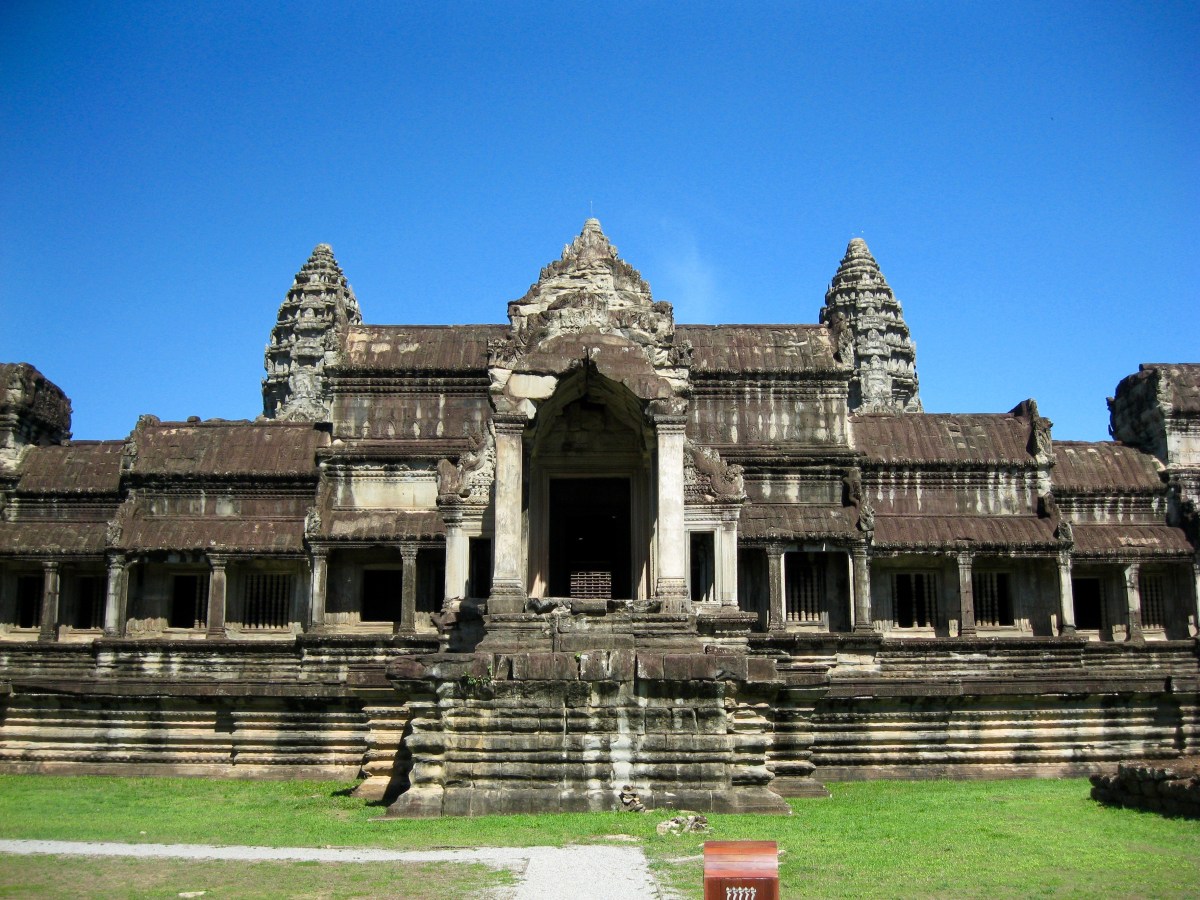 Wow! Visiting the Temples of Angkor was like standing in a movie, or going back in time. Our first stop of the day was the iconic Angkor Wat, of course. I was surprised to see that the temple looked just as grand as it did in photos I had seen—in fact, it looked far more impressive in real life. Angkor Wat was less ruinous and crumbly than the temples we saw later in the day, which made it difficult to grasp the ancientness of the structure. It’s hard to imagine people building such a humongous, intricate place, stone by stone.
Wow! Visiting the Temples of Angkor was like standing in a movie, or going back in time. Our first stop of the day was the iconic Angkor Wat, of course. I was surprised to see that the temple looked just as grand as it did in photos I had seen—in fact, it looked far more impressive in real life. Angkor Wat was less ruinous and crumbly than the temples we saw later in the day, which made it difficult to grasp the ancientness of the structure. It’s hard to imagine people building such a humongous, intricate place, stone by stone.

 Steep stairways made for a dizzying climb to the upper levels of the temple. We had to climb using our hands and feet as if it were a ladder, not a staircase. The steepness of the stairs represents the pathway to heaven and enlightenment—an architectural reminder that getting there is difficult, and must be earned. There were offerings of flowers and incense
Steep stairways made for a dizzying climb to the upper levels of the temple. We had to climb using our hands and feet as if it were a ladder, not a staircase. The steepness of the stairs represents the pathway to heaven and enlightenment—an architectural reminder that getting there is difficult, and must be earned. There were offerings of flowers and incense  scattered throughout the temple to honor and thank the Buddha. Many people stopped to pray on colorful mats in front of the larger Buddha statues. I received a red bracelet from a monk in the temple, who tied it in multiple knots while chanting a blessing of good luck.
scattered throughout the temple to honor and thank the Buddha. Many people stopped to pray on colorful mats in front of the larger Buddha statues. I received a red bracelet from a monk in the temple, who tied it in multiple knots while chanting a blessing of good luck.
Exploring Angkor Wat was tiring, especially on one of the hottest days of our time in Southeast Asia. But, using the need to rehydrate as an opportunity to try something new, we bought coconuts and drank the water. I’m a fan of coconut water here in the US, but nothing compares to the cool sweetness of the stuff straight from the source!
After Angkor Wat, we made our way to the Bayon, a temple known for its hundreds of stone carved faces. Historians still dispute the identity of these faces—all 216 depict the s ame person. Some believe the faces portray King Jayavarman VII, while others think they are images of the bodhisattva of compassion, Avalokitesvara or Lokesyara.
ame person. Some believe the faces portray King Jayavarman VII, while others think they are images of the bodhisattva of compassion, Avalokitesvara or Lokesyara.
The Bayon amazed me even more than Angkor Wat because it somehow felt more ancient. The preservation of the carvings was still remarkable, but the structure itself was more worn down. I also enjoyed that the temple left plenty of space for open air. There were very few walls that closed you off from the outdoors, evoking a freer feeling than I experienced at Angkor Wat.
The final temple we visited was Ta Prohm (yes, the temple from Tomb Raider).  Since the decline of Angkor, nature has slowly reclaimed its dominance, weaving giant trees in and out of the man-made structures. This temple had a more guided, linear progression than the Wat or the Bayon.
Since the decline of Angkor, nature has slowly reclaimed its dominance, weaving giant trees in and out of the man-made structures. This temple had a more guided, linear progression than the Wat or the Bayon.
Rediscovering my photos, I’m in disbelief that my feet really stood in these ancient places. It doesn’t seem real, and yet the imposing structures of stone could not be more firmly tangible, having withstood thousands of years. If reality is measured in time, then the temples we visited are realer than me, or anyone else who wanders through them.

